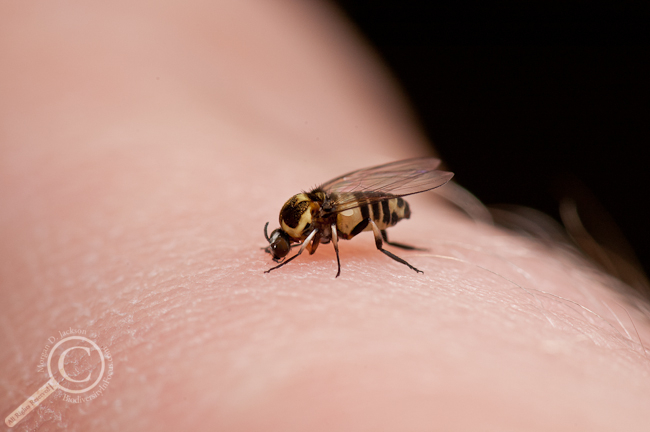Dear io9,
I appreciate all the work you do to bring science news to a large and enthusiastic audience, and I’m a frequent reader myself, but as they say, with great power comes great responsibility. Unfortunately in a recent post one of your authors blew it in a big way.
In “Too many fly bites can lead to death by bug-spit poisoning”, Esther Inglis-Arkell repeatedly states that black flies inject their larvae into the bodies of the birds or people their feeding off of, and that humans are carriers of their young.
No. Just, no.
Black fly larvae are 100% aquatic, living in streams, rivers & flowing water all over the world. In some places — like northern Canada, so infamous for its black fly populations there have been songs sung about them — rivers and streams can be black with fly larvae attached to rocks and other material under the water (check out this post by Crystal Ernst to see just how many larvae can be found in the cold waters of the Great White North).
Yes, like most blood-feeding invertebrates, black flies employ anti-coagulant-laced saliva to keep the good times flowing, but there certainly aren’t fly babies in that spit. Some species of black fly in Africa and South America can transmit a nematode parasite through their saliva (Onchocerca volvulus, responsible for River Blindness, a non-fatal disease), and, as evidenced by the paper that inspired Inglis-Arkell’s post, too much fly saliva can be a bad thing, but to fear-monger that there could be fly larvae swimming in your blood isn’t cool.
Now, I recognize that Inglis-Arkell acknowledged her mistake in response to a commentor who also pointed out the error, but that acknowledgement is buried in the comments, and, unless a reader goes looking for it, will likely remain unread. Why not correct the post (preferably in a way that doesn’t hide a mistake was made) or at least add a footnote that clearly states the author’s mistake? That’s the great thing about web publishing: you can immediately clear up mistakes when they’re uncovered instead of waiting days to print a retraction or correction like in the olden days (i.e. less than 10 years ago). Your web stats show that more than 36,000 people have read articles by Ms. Inglis-Arkell today alone, meaning there are a huge number of people potentially leaving your site with a horribly inaccurate impression of black fly biology.
And that’s the real shame, because despite their bad reputation, black flies are fascinating creatures and are actually kind of cute, especially when they’re biting someone else.
UPDATE 2013-03-10 20:30: That was fast! Less than 15 minutes after I tweeted a link to this post, io9 responded saying they were correcting their original article, and included links to those who pointed out the problem! Well done io9, well done!


Good job, and good photos! I am often surprised at how pretty some of these blackflies can be.
Great that they made the correction! I’m glad I’m not the only one with a bit of a fondness for black flies! (Ask me again how fond I am next time there are 50 of them on my legs!)